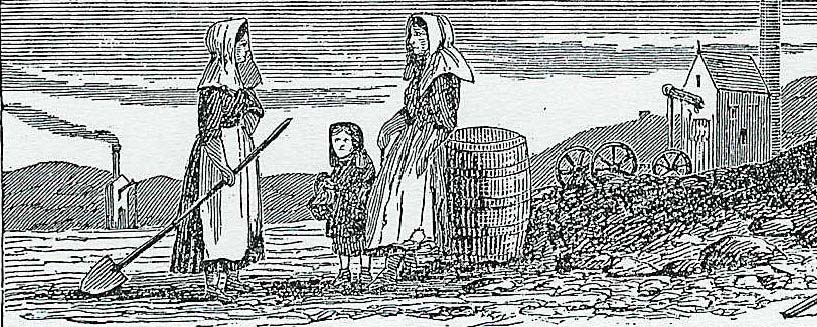|

1842 Report on the Employment of Children and Young People
at the Mines of Cornwall and Devon
(BPP 1842: Charles Barham The Royal Commission for Inquiring into the Employment and Condition of Children and Young Persons in the Mines of Cornwall and Devonshire).
The Cornish Studies Library and this website should be acknowledged if any part of this work is reproduced in any media
Using this Transcript
This transcript has been reproduced by taking digital photographs of each page. Tables have been retained as digital images, but in order to reduce file sizes, the text has been subjected to an OCR programme, and manually corrected. The original page numbers are been retained, but there has been some rationalisation of the punctuation and layout. There is a link to the complete report, however this is a large file and will take time to load. In order to produce documents that will load quickly, the text has then been divided into 9 sections. These are .pdf files in which you can scroll through the pages, and zoom as necessary. Use the back button to move between sections. A search can be made in the usual way in each .pdf file, but an index of people mentioned is also available on the index button. Please note that the references Barham uses for his interviews (Evidence) in the original document are incorrect, but this transcript has retained the original numbering for both. There is a brief history of the report at the bottom of this page.
We would be grateful if you could contact us through this website of you find any errors in the transcript or index.
An original copy of the report, and a facsimile are available in the Cornish Studies Library, Redruth. We thank Kim Cooper and the Cornwall Studies Library for permission to reproduce this work and to make it available on this website.
1842 Commission for Cornwall & Devon (The complete report - Large File)
Intro-Geology and Mining Developments pp 730-740
Intro-Miners' Health pp 740-747
Intro-Mining Methods pp 747-764
Children's Ages and Nos. pp 764-770
Children's Work pp 771-788
Children's Health and Education pp 789-806
Recommendations pp 807-812
Man Machines, Sick Club, Fowey Consols Accident pp 813-815
Interviews pp 816-854
Name Index for Cornwall & Devon
History of the Cornwall & Devon Report
In 1841, after pressure from Lord Ashley (later Lord Shaftesbury), four commissioners were appointed by parliament to investigate the conditions under which children and young people were working at the various mines of the realm. They were to report back in 1842. A sub-commissioner, with a good working knowledge of the industry, was identified for each major mining area, and was charged with gathering information and evidence. For transcripts of reports for the other regions go to the CMHRC Website The person appointed to this task for the South West was Charles Barham, Esq.
Born in Truro in 1804, Charles Barham read medicine at Cambridge but returned to Cornwall by 1837. Much of his work was as a mine surgeon, and he had presented ‘Some Remarks on the Diseases of Miners’ to the Royal Institute of Cornwall, in November 1840. As sub-commissioner, he gathered information on the mines of Cornwall, the east bank of the Tamar and west fringe of Dartmoor (but not those of the Teign Valley, Coombe Martin, north Dartmoor or the Mendips).
Out of his concern for all mine employees, Barham stepped beyond his brief, and in his lengthy report included evidence on the working environment of adults, as well as the children and young people. In his appendix, he recorded summaries of 115 interviews which he conducted during 1841, which included both surface and underground workers, as well as mine officers, and local clergy, teachers and justices of the peace. Some of these summaries appear to be notes made during medical consultations, and are often a mixture of third person observation, and quoted speech. They do not appear to have been edited into a coherent piece of reportage, nor does Barham claim that there was consistent gathering of information. However as a whole, he hoped that they would provide a valuable insight into the work, home-life and health of the young people who worked at the mines of Cornwall and West Devon, in the mid-19th century.
Back
to Top |









